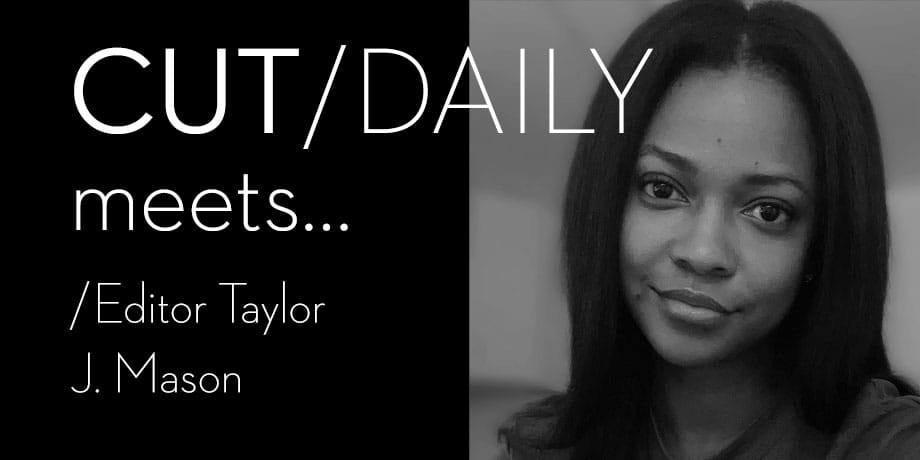#470 – Cut/daily Meets... Editor Taylor J. Mason

To be honest, I'm too much of a wimp to watch many horror movies these days, but if I were going to summon up the courage to watch one as an editing showcase, it would probably be HIM.
Edited by Taylor J. Mason, a rising editorial star if there was one – having assisted Joe Walker and won an Emmy and an Eddie for her work alongside Stephanie Filo and Malinda Zehner Guerra on Black Lady Sketch Show – HIM looks like a visual and stylistic feast.
That creativity seems to have divided audiences - with some loving it and others not – which usually means it's a film that's bravely taking a few really big swings and not playing it safe, the kind of project that's exciting to work on!
Either way, I'm incredibly grateful to Taylor for taking the time to answer my questions.
My favourite thing Taylor shared?
To trust your gut.
Directors and producers don’t expect me to have every answer, but they do need me to make choices with confidence when the way forward isn’t so obvious, and that’s when I leaned on my instincts the most.
— Editor Taylor J Mason
Taylor's previous credits include:
- A Black Lady Sketch Show (TV Series)
- Idiotka
- The Madness
- Monster (TV Series)
- Birth/Rebirth
- Dune Part One (Assistant Editor)
- Blade Runner 2049 (Assistant Editor)
What’s your daily work routine?
My routine shifts depending on what phase of production we're in. Assembly is probably the most structured, but every stage includes a pretty substantial amount of caffeine.
Each day of production starts with a check-in. My First Assistant Editor and I go over anything notable in the dailies:
- How much footage came in
- Whether there are multiple cameras or units
- What production flagged for us
- What we might need to flag for them etc.
I rely on my team a lot during this time, especially when we’re dealing with new cameras or formats.
On Him, we had the unique experience of working with footage from a thermal FLIR camera, which captures infrared heat signatures and translates them into high-contrast images.
In layman's terms, it lets us see temperatures invisible to the naked eye. Since it was my first time handling this kind of material, I leaned on my AEs to refine the workflow so it folded seamlessly into the cut.
When I start editing, my goal is to try and ‘keep up with camera’ but some scenes require more attention or just more distance, in which case, I revisit those on shorter shoot days (days that give me less footage and thus more time).
Once production wraps, I usually have about a week or two to refine, polish and tackle any remaining sound work.
When the director returns, we’ll watch the assembly, and if, when it’s over, I don’t find them at the far end of the room in the fetal position, it’s a success!
We’ll discuss what works, what needs to change and map out priorities for the next stages.
Every phase after this point is a combination of screenings and feedback, which look different depending on the project, but for the most part, I find that this is the time when the cut evolves into the best version of itself.
